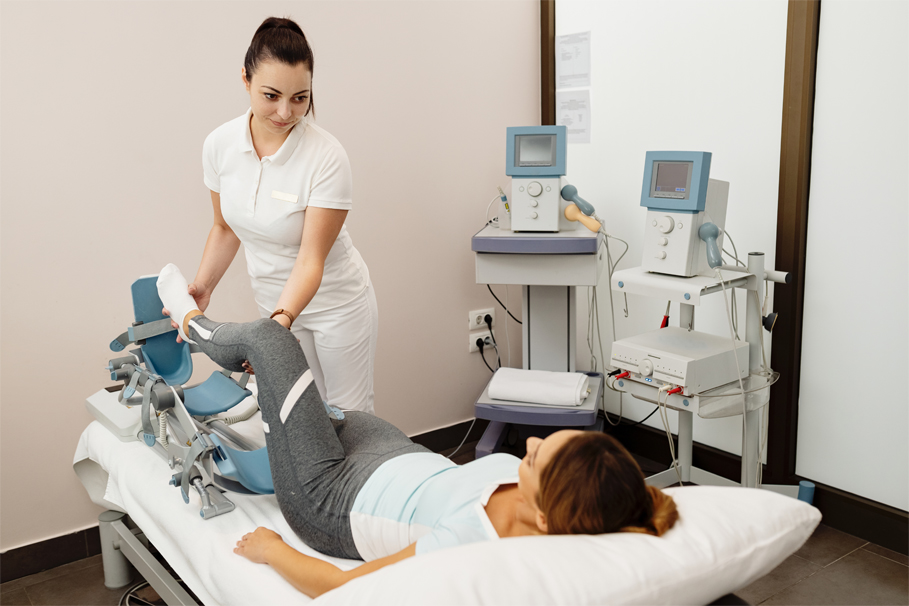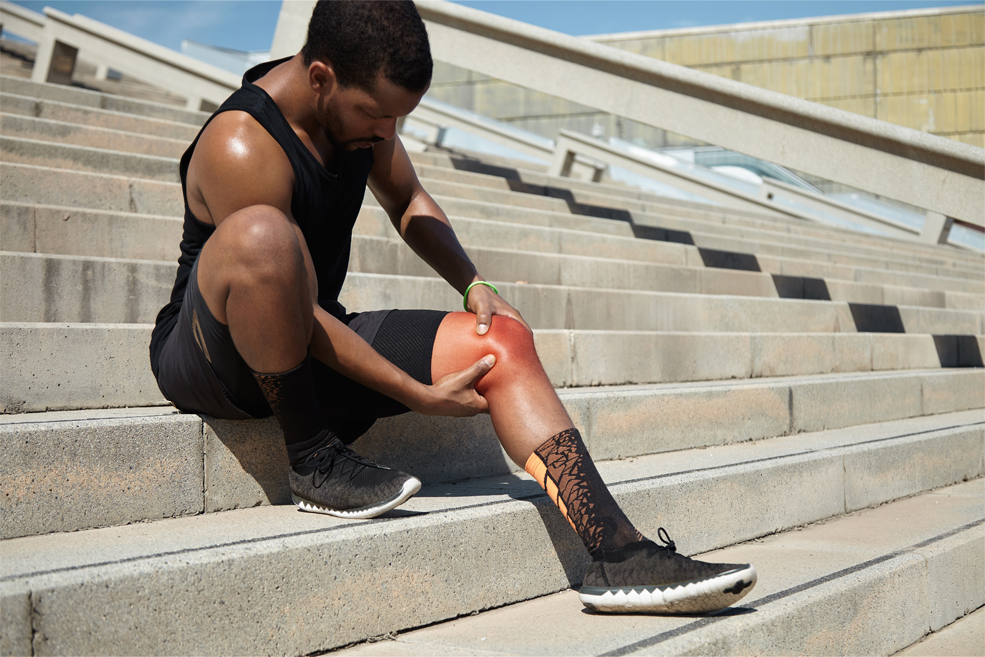Osteoarthritis of the Knee
Osteoarthritis is the most common form of arthritis, affecting tens of millions of people worldwide. It is a degenerative joint disease characterized by the breakdown and eventual loss of joint cartilage. The breakdown and deterioration of cartilage causes the bones to rub together resulting in extreme pain. OA rusting from “wear and tear” is the most common reason individuals need to undergo knee replacement surgery.
For further information, contact us at 844-784-2255

Symptoms of knee osteoarthritis include:
- Pain – during movement
- Tenderness
- Stiffness –usually after periods of inactivity
- Lack of flexibility – inability to move through full range of motion
- Grating sensation
- Bone spurs – small, hard lumps felt around the joint
Knee osteoarthritis is a degenerative disease that usually worsens over time. If you are experiencing any of the above symptoms, now may be the time to see a knee specialist.
The Cause of Knee Osteoarthritis
Your knee joint is formed by the intersection of the femur (thigh bone), tibia (shin bone) and patella (knee cap). These bones form three “compartments” or sections:
- Lateral compartment (outer half of your knee)
- Medial compartment (inner half of your knee)
- Patellofemoral compartment (behind the knee cap)
In a normal functioning knee, each bone glides smoothly against the other on a layer of cartilage that covers the ends of the bone. Cartilage protects the bones while allowing the joint to glide smoothly. It also acts as a shock absorber. In a knee joint affected by osteoarthritis, the smooth cartilage lining on the inside of the joint has worn away.

The health and stability of your ligaments can be important determining factors in whether one knee treatment option is better for you than another.
A partial knee replacement is an option for people who have osteoarthritis in one or two compartments of the knee. A total knee replacement is an option for people with osteoarthritis in all three compartments.
Risk Factors
While the exact cause of OA is unknown there are several factors that may increase risk of developing OA:
- Age: The strongest risk factor for OA. While OA can start in young adulthood, in these cases it is often due to joint injury
- Gender: OA affects both men and women. However, before age 45, OA occurs more frequently in men; after age 45, OA is more common in women
- Joint injury: Traumatic injury to a joint increases risk of developing OA
- Obesity: Chances of developing OA generally increase with the amount of weight the body’s joints have to bear
- Joint Alignment: People with joints that are not aligned correctly, like bowlegs, dislocated hips, or double-jointedness, are more likely to develop OA in those joints
Treatment Options
OA can be treated non-surgically, with drugs or with a variety of surgical treatment options. Nonsurgical options generally begin with lifestyle modification – losing weight, switching from running to lower impact exercises, and minimizing activities that may aggravate the patient’s condition. Physical therapy can help increase range of motion and flexibility in affected joints, and supportive devices like braces, canes and specialized shoes can assist with pain and weight bearing issues. Certain drugs are available in treatment of OA, primarily surrounding anti-inflammatory and pain management medications.
Finally, there are several surgical treatment options for those patients whose OA does not respond to nonsurgical treatments:
- Arthroscopic surgery using fiber-optic technology. The instruments enable a surgeon to see inside the joint to remove debris or repair torn cartilage
- An osteotomy, which is a process of removing a wedge of bone from the tibia or femur to improve alignment of the knee joint and adjust weight bearing of the knee
- A Total Knee Replacement, which sacrifices one or both of the ACL and PCL, removes all weight bearing surfaces of the knee and replaces it with an with an artificial joint
- A Partial Knee Replacement is an option for people who have osteoarthritis in one or two compartments of the knee. A total knee replacement is an option for people with osteoarthritis in all three compartments.
Contact Us
At San Diego Spine & Joint Center, we will conduct a comprehensive assessment of your specific knee anatomy, and discuss the potential risks and benefits of available knee treatments, including robotic-assisted partial knee replacement. For a physician who specializes in knee implants, call 844-784-2255.
Featured Services
Behavioral Health

Emergency Services
Surgical Services
Rehabilitation
Health & Senior Center



